Pectoralis Muscles
The term is derived from the Latin pectus, meaning the breast area. There are two muscles, pectoralis major which is prominent, and pectoralis minor which is hidden. The prominent muscle is the one the muscle builders refer to as the “pecs.”
Pectoralis major is the anterior portion of a sheet of muscle which includes the trapezius posteriorly and the deltoid laterally; all find attachment to the collar bone (clavicle). The central bony attachment of pectoralis major is from the medial half of the clavicle, the margin of the breast bone (sternum), the ribs, and the thick fascia over the abdominal muscles. There are easily recognisable three segments of the muscle, functioning collectively or separately. As the fibers pass laterally, the lowermost pass behind the uppermost, forming a rounded lower border at the anterior wall of the armpit (axilla) converging on the tendon which is inserted into the humerus.
The muscle functions in drawing the arm to the body, as in pulling down a rope, or the body to the arm, whichever is fixed, as in raising oneself on a beam.
Pectoralis minor is completely hidden beneath major. Its medial attachment is to the 3rd, 4th, and 5th ribs; the fibers pass up and out to attach to the coracoid process of the shoulder blade (scapula). The tip of this process is easily felt below the mid-point of the clavicle.
Although this muscle will stabilize the shoulder blade when the arm is used, and to an extent pull the arm forward around the chest (protraction) it is probably of most value as a secondary muscle of respiration. The runner will unconsciously hold his hips when standing out of breath following a race – what in fact he is doing is to stabilize the scapula so pectoralis minor can assist in lifting the ribs to enhance the volume of air entering the chest in forced inspiration.
 before
before
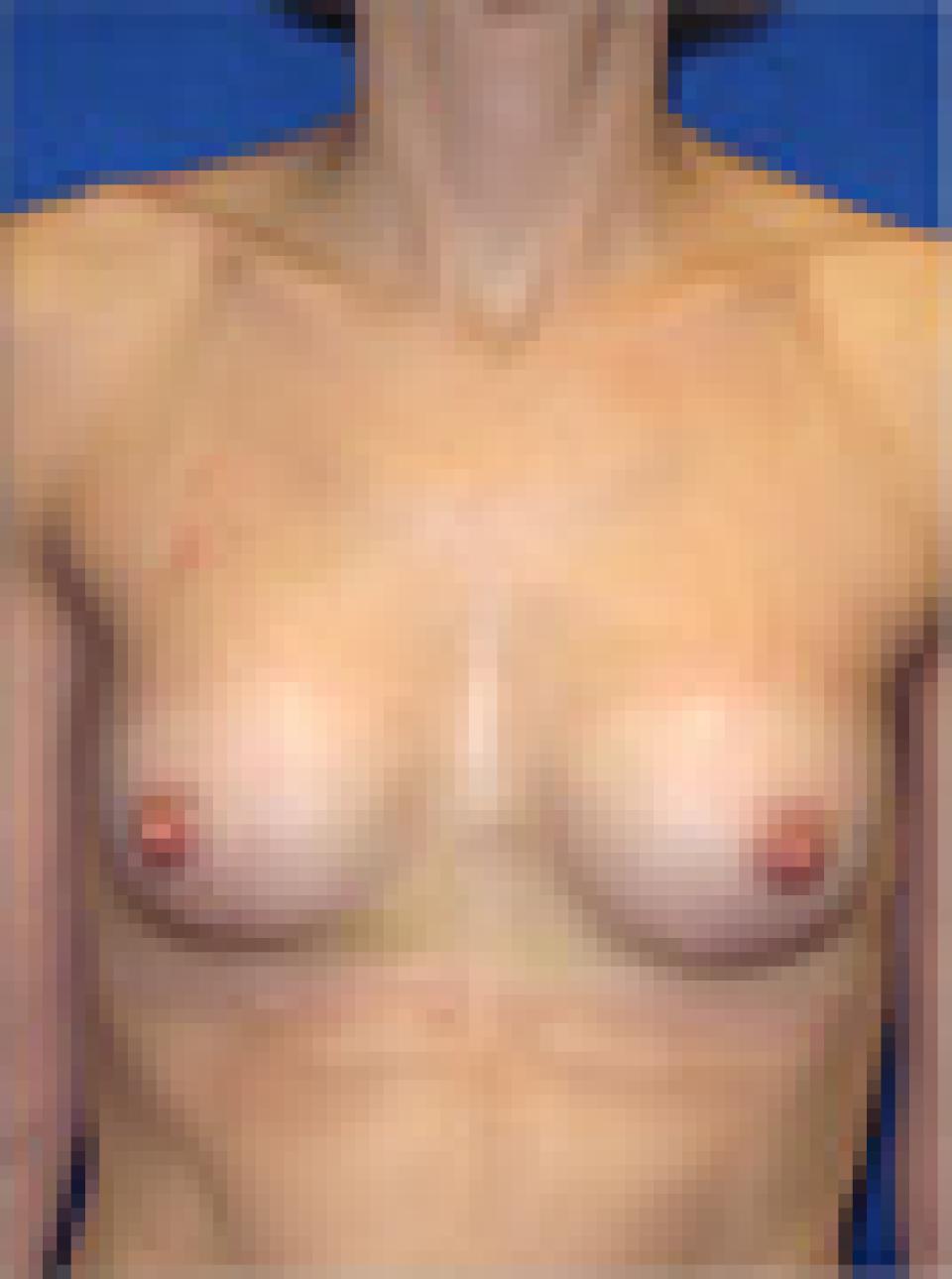 after
after
These photographs depict a 41 year old woman whose goals after surgery were to have more shapely but not overly large breasts, as her frame was small. She underwent breast augmentation with 158 cc smooth, round, silicone implants.
The implants were placed beneath her pectoralis muscles through an incision in the lower fold of the breast. The post-operative photographs depict her at just under 2 months after surgery. She wears a small B cup bra after surgery.
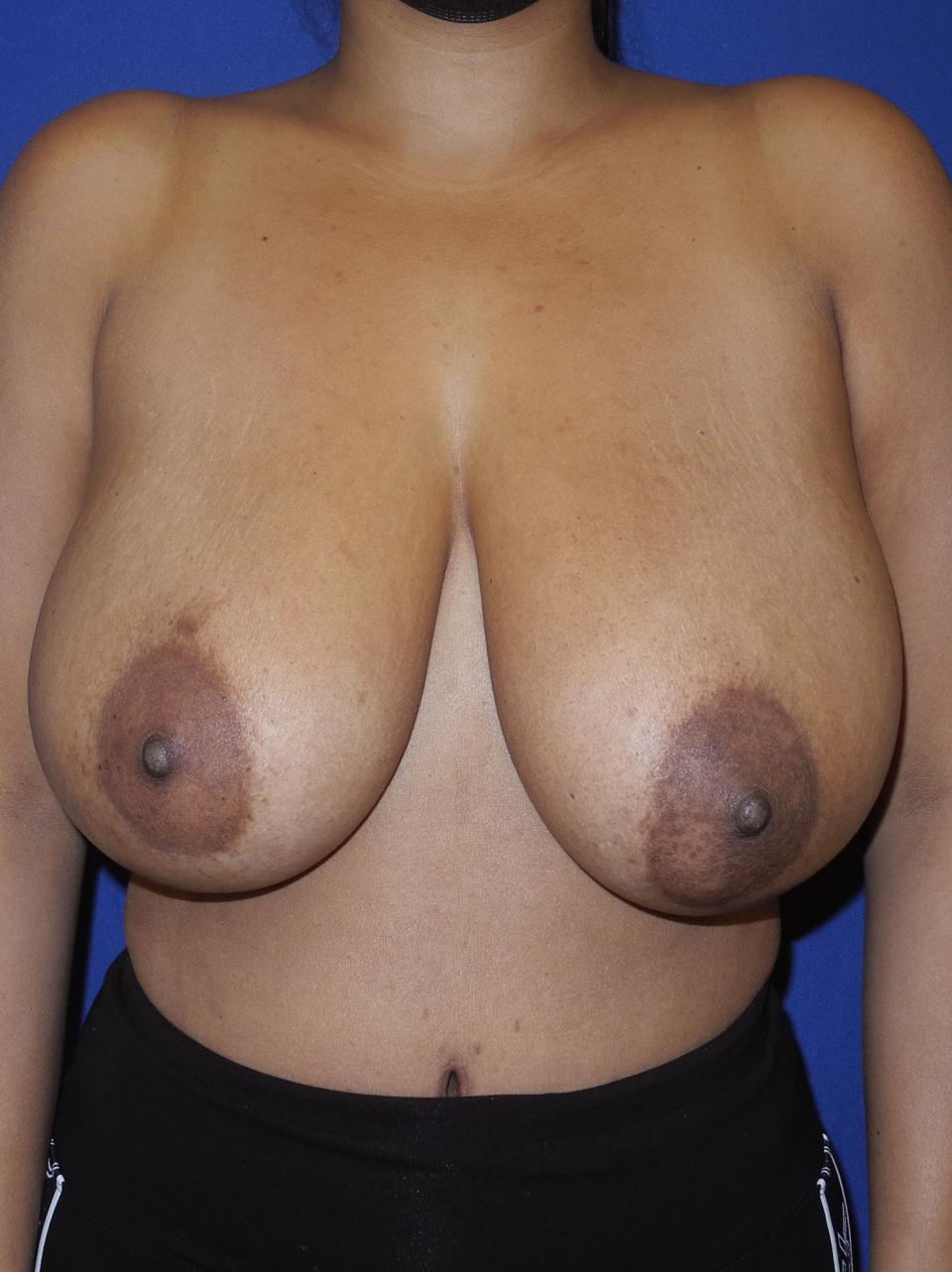 before
before
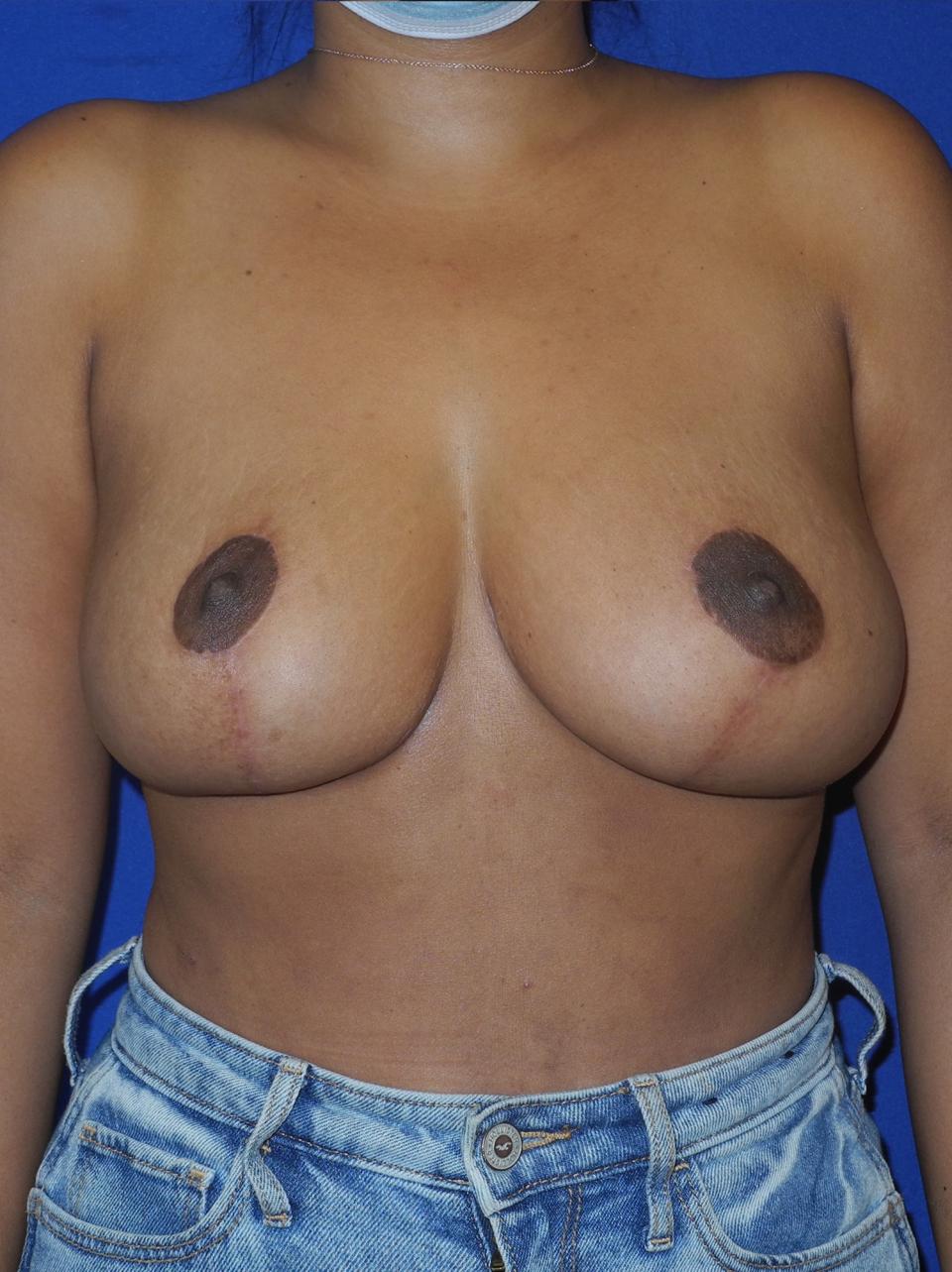 after
after
This individual underwent a breast reduction in which just over two pounds of weight was removed from the breasts. The breasts were shortened in length and lifted to give a rounder appearance. This photograph was taken at approximately four months following surgery.
Liposuction of the tissue that lies between the upper outer quadrant of the breast and the upper arm can decompress the density of tissue between the breast and the arm and improve the fit of certain types of clothing.
 before
before
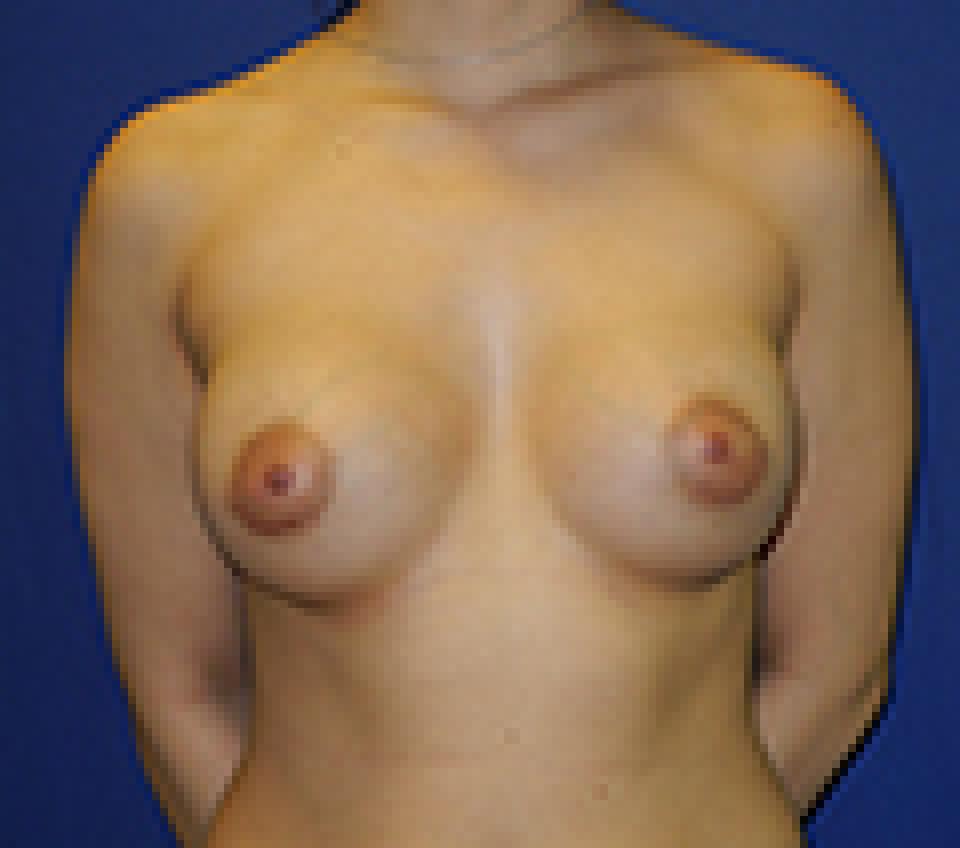 after
after
This 22 year old woman underwent bilateral augmentation mammaplasty using saline filled breast implants inflated to a volume of 320 cc’s place partially beneath the pectoralis muscle.
This individual wished to have the largest possible cup size while still appearing to have relatively natural breasts.
In my opinion, this implant size was the largest round implant that could be inserted, while still maintaining a natural appearing breast shape.
With the new anatomic shaped implants, which are shaped more like a teardrop, it is possible to achieve larger breast sizes and still maintain a natural shape.
 before
before
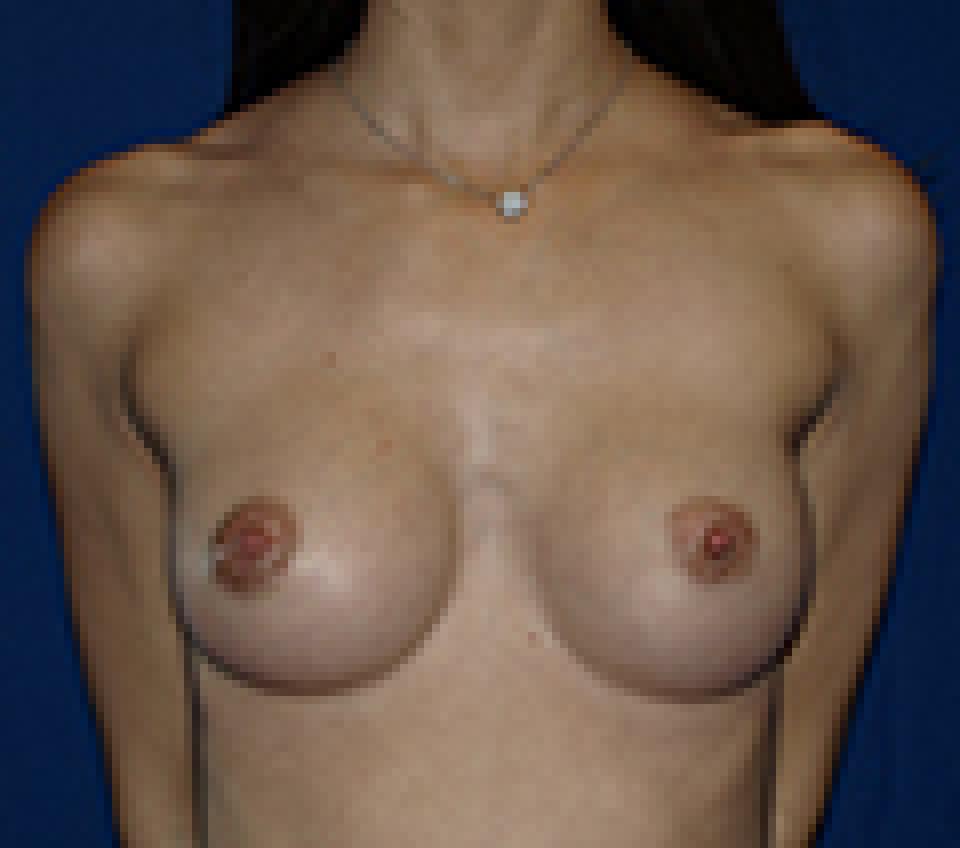 after
after
This 32 year old woman underwent breast augmentation using saline filled breast inflated to a volume of 195 cc’s and placed partially beneath the pectoralis muscle.
The individual has a mild pectus excavatum, a condition in which a person's breastbone is sunken into the chest. She also has a tendency to stand in a slightly kyphotic position, which means that her upper back is rounded and her head is relatively forward.
Obtaining a natural looking result in a patient who has pectus excavatum and postural abnormalities, as this individual has, can be challenging but is certainly possible.
In the case, the implants were inserted through a 3 cm incision at the lower border of the areola, which is the darker skin surrounding the nipple. These incisions typically heal quite well and can be difficult to see.
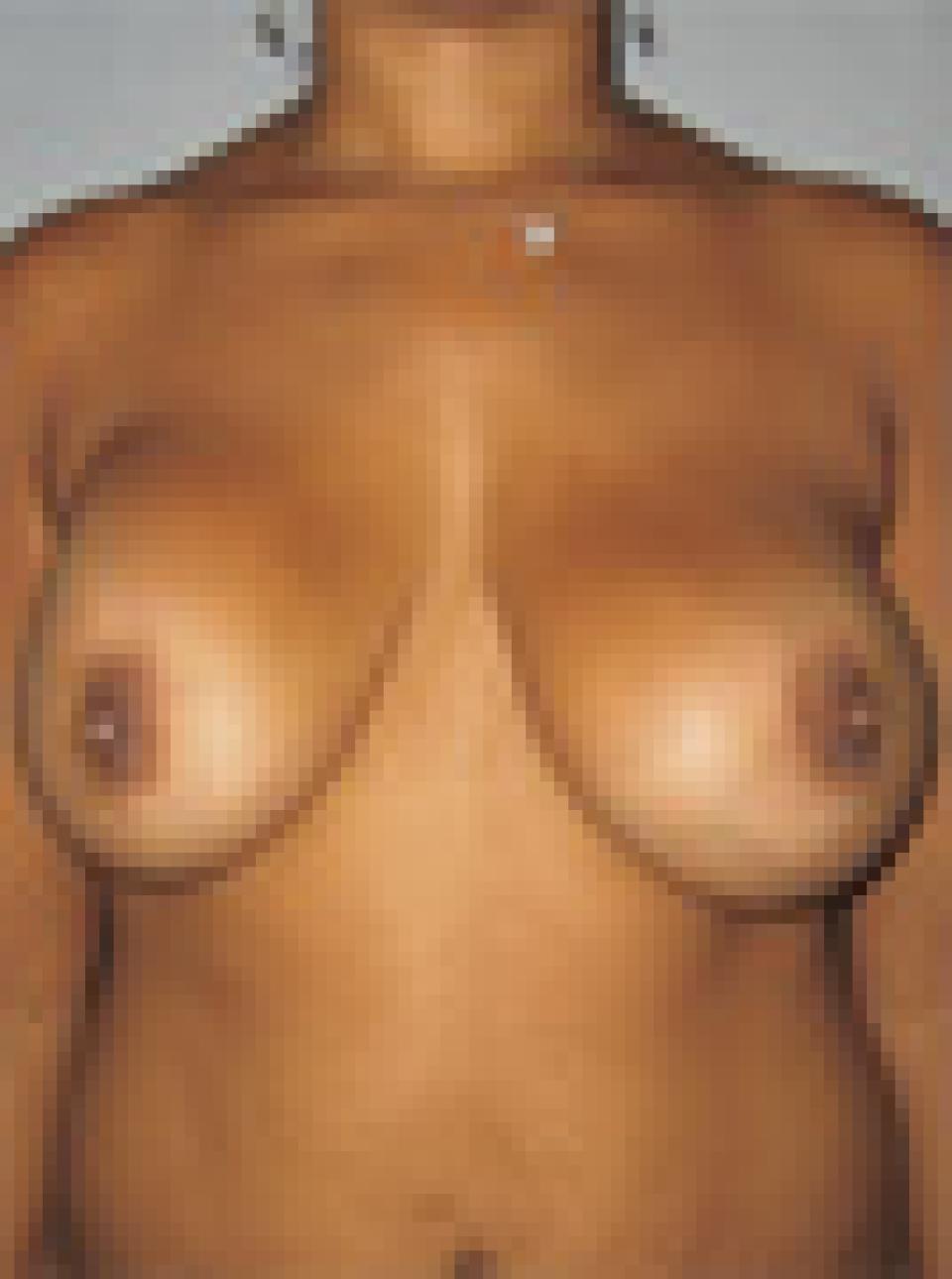 before
before
 after
after
This case depicts a 30 year old woman who had undergone breast augmentation with 300 cc smooth, round saline implants placed above the pectoralis muscles via a periareolar incision by another surgeon approximately one year prior to her consultation with Dr. Belsley.
Her Grade IV capsular contracture was revised by exchanging her implants and placing the new 330 cc smooth, round saline implants below the pectoralis muscle and performing a vertical or "lollipop" incision breast lift. The post-operative photographs depict her appearance just under one year after her corrective surgery.
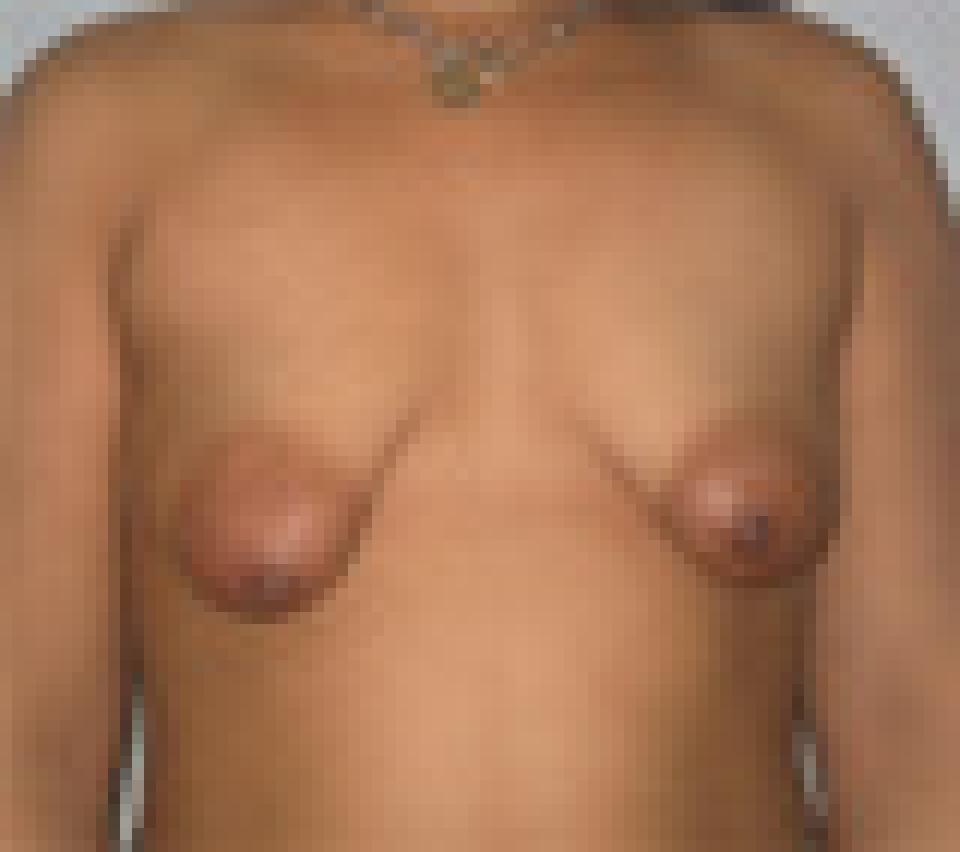 before
before
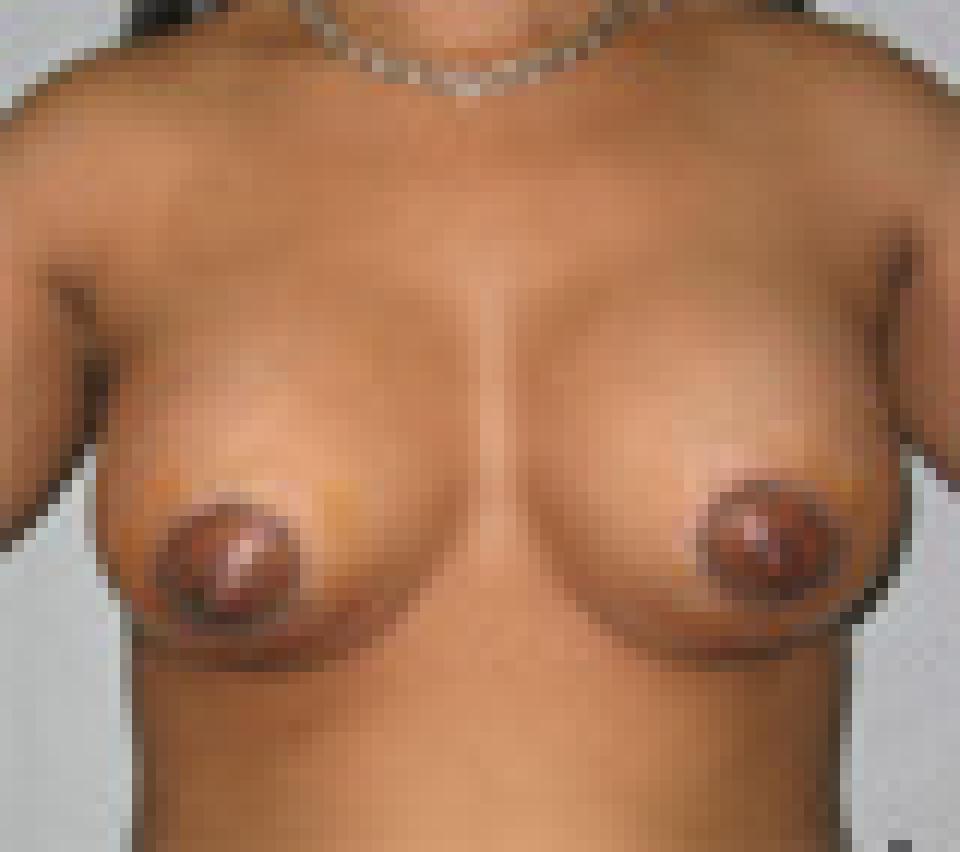 after
after
This case depicts a 24 year old woman with a tuberous breast deformity who underwent breast augmentation with 330 cc smooth, round, saline implants placed beneath the pectoralis muscles via a periareolar approach.
Her areolas were reduced simultaneously, necessitating an incision completely around the perimeter of the areola.The post-operative photographs depict her appearance at two weeks after surgery.
Dr. Belsley's Philosophy of Breast Augmentation
When it comes to deciding what approximate breast size you wish to achieve, the best advice I can give you is that you should be guided by your physical frame. Indeed, you may in fact be limited by it. In my practice, I select implants based upon your chest measurements, the quality of your breast skin and the size of your breasts prior to surgery.
I perform breast augmentation through a peri-areolar or inframammary approach and I place that vast majority of implants at least partially beneath the pectoralis muscle. My patients are welcome to select either saline or silicone filled breast implants. Silicone filled implants can in some cases achieve a more natural feel and may be a particularly attractive option for women with less breast tissue prior to surgery.
More >>Dr. Belsley's Philosophy of Breast Revision
I apply the same criteria to patients who have had their surgery elsewhere as I do to my own patients. I am typically reluctant to re-operate on a breast augmentation patient for minor issues, because each time one undergoes revision, many of the risks of surgery tend to be multiplied. This is why I spend a great deal of time discussing size preferences and the likely outcome of surgery with my patients pre-operatively. It is said frequently that the most common reason for re-operation of the breasts in women who have had breast augmentation surgery is that they wish to “go bigger.” Ultimately, I feel that this is a poor reason to undergo repeated surgical procedures that can only result in more scar tissue, which is unpredictable, and thinning of the native tissues, which are necessary to cover the implant and provide a natural looking result. I encourage patients to think carefully about the risks of revision in cases where there is not a major problem.
More >>Dr. Belsley's Philosophy of Male Breast Reduction
Treatment for gynecomastia can be approached in several ways and is largely dependent upon the “type” of tissue in the chest that needs to be reduced. A physical examination is necessary to create a plan for treatment. Most of the time, I treat these individuals with a combination of ultrasonic liposuction and removal of glandular and breast tissue through a small incision on the border of the areola. Some individuals will be able to achieve excellent results with ultrasonic liposuction alone. Others, may require more extensive incisions. My goal is to give you a natural looking masculine shape that is well proportioned with the rest of your body using the shortest incision possible.
More >>Breast reduction is also called Reduction Mammoplasty
Breast reduction is also called Reduction Mammoplasty. Overly large breasts have appropriately been described as an “affliction.” Terms have been derived, ranging from macromastia to gigantomastia which may not be etymologically correct but are certainly image-conjuring.
The surgical technique of reduction will depend on the situation, the amount of reduction required, the preference of the patient and the decisions of the surgeon. To the extent possible, wherever the incision is placed, the nipples and areolae will be left attached to functioning breast tissue, thereby retaining normal sensation and the potential for breast feeding.